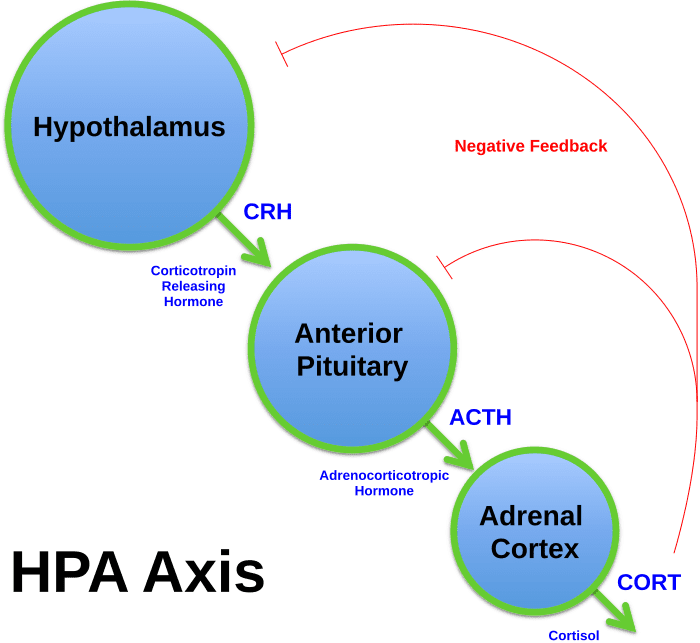Why Does This Matter?
If you live with PTSD, depression, anxiety, or ADHD, it can feel like your brain is working against you. You promise yourself you will react differently, sleep better, or finally stop spiraling, yet the same patterns keep pulling you back. This dilemma is not a willpower problem. It is a wiring problem that sits right where neuroplasticity and the HPA Axis meet.
Neuroplasticity is your brain’s ability to change its structure and function. The HPA axis, which stands for hypothalamic-pituitary-adrenal axis, is your central stress pathway. When these two systems interact in a healthy way, you can respond to stress, recover, and move on. When they lock into unhealthy patterns, your brain starts to treat everyday life like a constant threat.
As the founder of MindLAB Neuroscience for over 25 years, I have witnessed high-achieving clients enter my office with the conviction that they are flawed. Once they understand how these functions work together, shame starts to melt. There is a map. There is a reason their brain reacts the way it does. Most important, there is a path to rewiring it.
In this guide, I will walk you through how neuroplasticity and the HPA Axis shape PTSD, depression, anxiety, and ADHD. I will translate complex brain science into plain language, share real client stories with details changed to protect privacy, and give you practical ways to retrain your stress system.

Neuroplasticity and The HPA Axis: A Simple Map
What The HPA Axis Actually Is
Think of the HPA axis as your body’s main stress circuit. It starts in the hypothalamus deep in your brain, moves to the pituitary gland, then signals your adrenal glands that sit above your kidneys. When the HPA axis fires, your body releases stress hormones like cortisol and adrenaline. Your heart rate rises, your breathing changes, and your senses sharpen.
This system does not pose a threat. It is what kept your ancestors alive. The problem begins when the HPA axis fires too often or stays activated for too long. That is where neuroplasticity and the HPA collide.
How Neuroplasticity Shapes Stress Pathways
Your brain changes every time you repeat a thought, a feeling, or a behavior. Neurons that fire together wire together. When stress hits, the HPA axis signals your brain that something important is happening. If this happens once in a while, your brain learns, adapts, and then returns to calm.
If you live in constant pressure, chaos, or trauma, the HPA axis sends nonstop alarms. The brain begins to set its plasticity around a threat. Circuits that detect danger strengthen. Circuits that support calm, focus, and joy weaken. This is the unhealthy partnership between the two that I see in so many clients.
One executive I worked with, I will call him Alex, lived in survival mode for years. He led a large company, cared for aging parents, and never truly rested. When he finally sat in my office, his HPA axis had become hypersensitive. A minor email felt like an attack. His brain had rewired toward threat, not by choice, but through neuroplastic changes driven by chronic stress.
When HPA Axis Get Stuck In Survival Mode
From Short-Term Response to Long-Term Wiring
The HPA axis was designed for short bursts. You meet the threat, you respond, and then your system settles. Modern life rarely works that way. You face constant pings, difficult news, and unfinished to-do lists. If you also have a history of trauma or emotional neglect, your HPA axis may already be primed to overreact.
Over time, the HPA Axis can lock into a loop. The axis fires, cortisol rises, you feel tense, and your thoughts race. Because the experience is uncomfortable, your brain starts scanning for the next threat. That scanning triggers the HPA axis again. The loop repeats, and new neural pathways form around it.
This phenomenon is why you may feel on edge even on a calm day or feel flat and numb after years of high stress. The system is no longer flexible. It has become the default.
The Cost Of A Miswired Stress System
A miswired HPA axis does not just affect mood. It changes sleep, digestion, immune function, and even hormones. Clients with anxiety describe racing thoughts that will not shut off at night. Clients with depression feel like their body is made of concrete. In completely safe situations, my clients with PTSD often report experiencing heart palpitations and stomach drops. Those with ADHD describe a constant struggle between focus and distraction, which intensifies as stress escalates.
All of these states link back to neuroplasticity. When the stress circuit is constantly on, the brain prunes away connections that support rest, curiosity, and creativity. The beneficial news is that this same plasticity can be used to rewire the system back toward balance.

PTSD, Neuroplasticity and The HPA
How Trauma Rewrites The Stress Circuit
PTSD is not only about memories. It is about a nervous system that was once overwhelmed and then changed. When a traumatic event occurs, the HPA axis becomes highly active. Stress hormones surge, survival circuits in the brain light up, and the brain records sensory details with painful clarity.
If the trauma is repeated, or the person does not receive support, neuroplasticity and the HPA Axis work together to store the world as dangerous. The brain learns that certain sounds, smells, or faces are equal threats. The HPA axis is then ready to fire at the smallest reminder.
One client, whom I will call Maria, survived a serious car accident. Months later, she still jumped at the sound of brakes and avoided driving on highways. Her HPA axis had been conditioned to see the road as unsafe. In her brain scans, we saw heightened activation in fear circuits and underactivation in areas that calm the HPA axis. Neuroplasticity had done its job; it had learned from danger, but the learning had become rigid.
Rewiring PTSD Through Targeted Plasticity
To help Maria, I did not ask her to simply “think positive.” That would ignore how deep the changes in nin her brain really were. Instead, we used precise, stepwise exposure combined with regulation techniques that directly target the stress circuit.
First, we trained her body to recognize what genuine safety felt like. Short breathing practices, longer exhales, and specific sensory drills signaled her HPA axis that it could stand down. Then we revisited driving in carefully graded steps, pairing each step with these safety signals. Over time, the neural pathways around the accident weakened while new pathways around safe driving strengthened.
Her symptoms did not vanish overnight, but the loop between neuroplasticity and the HPA Axis shifted. She could drive again without her entire body going into alarm. That is the power of using plasticity intentionally.

Anxiety, Neuroplasticity and The HPA Axis
Why Anxiety Feels Like A Runaway Brain
Anxiety is often described as “too much thinking,” but the deeper driver sits in the HPA axis. When your brain expects a threat, even small unknowns can set off the alarm. Neuroplasticity and the HPA Axis then work together to reinforce worry. Each time you imagine the worst, stress hormones rise, your body tenses, and your brain remembers that pattern.
I worked with a young attorney, I will call him Ben, who woke up every night around 3 a.m. with his heart pounding. He could not stop replaying every mistake he might have made at work. His HPA axis had learned that the night hours were a time for problem scanning. The more he worried, the more entrenched the pattern became.
Calming Anxious Wiring
To reset this pattern, we focused directly on the partnership between neuroplasticity and the HPA Axis. During our sessions, Ben learned to catch the very first physical signs of activation, the slight tightening in his chest and the shallow breath. Instead of chasing thoughts, we trained his brain to send new signals back down the HPA axis.
He practiced slow nasal breathing, which sends a message to the hypothalamus to ease the alarm. We paired this with brief cognitive drills where he labeled his sensations out loud, such as “heart racing, throat tight, mind predicting.” This type of naming recruits prefrontal circuits that regulate the HPA axis.
Over months, his brain began to associate nighttime with these calming routines rather than with panic. The connection between neuroplasticity and the HPA Axis shifted again, away from fear and toward regulation. His wake-ups decreased, then stopped.

Depression, Neuroplasticity and The HPA Axis
When The Stress System Shuts Down
Depression often looks like low mood, but in the brain it is frequently the story of an exhausted HPA axis. After years of high stress, the system can go from hyperactive to blunted. Cortisol rhythms flatten; mornings feel heavy rather than energizing. Neuroplasticity and the HPA Axis adapt by turning down responsiveness across many circuits.
One client, whom I will call Jordan, was a founder who had pushed through three startups and a painful divorce. By the time we met, he felt numb. He described life as “muted gray.” Nothing gave him pleasure, not even activities he used to love. His brain had shifted from survival mode into a kind of freeze.
Rebuilding Motivation Through Plasticity
With Jordan, the goal was not to push him into quick positivity. Instead, we needed to slowly reawaken circuits that had gone offline. We started with very small, predictable bursts of activation that his HPA axis could handle. Ten-minute walks, brief cold exposure, and tiny daily goals gave his stress system a bit of structure without overwhelming it.
Each time he completed a micro goal, we paused to let his brain register success. This is where neuroplasticity and the HPA Axis work beautifully together. Small wins bring modest surges of neuromodulators that support plasticity. Over time, these surges help rebuild pathways that connect action, reward, and mood.
We also worked on his morning routine, since the HPA axis is supposed to give a healthy cortisol rise shortly after waking. By pairing light exposure, gentle movement, and a short planning ritual, we helped his brain relearn that mornings signal “start” again. The shift took time, but months later, he described feeling color returning to his life.

ADHD, Neuroplasticity and The HPA Axis
Why Stress Makes ADHD Symptoms Worse
ADHD is often framed as a simple attention problem, yet the story is more complex. Many of my ADHD clients have stress systems that swing quickly between hypo- and hyperactivation. When the HPA axis fires strongly, focus narrows, but it may lock onto the wrong target, such as social media or a crisis that is not truly urgent. When the axis is underactive, they feel foggy and unmotivated.
Neuroplasticity and the HPA Axis interact in ADHD in a unique way. Repeated cycles of last-minute scrambling, missed deadlines, and shame create strong pathways around panic. The brain learns that it only mobilizes under immediate pressure. This phenomenon explains why long-term projects appear unattainable until the final moments.
A client I will call Riley, a brilliant designer with ADHD, described the process perfectly. She said, “I do nothing for three weeks, then my brain switches on the night before the deadline.” Her HPA axis had been trained to fire only under threat.
Training The Brain To Focus Without Crisis
To help Riley, we built new experiences where focus and progress happened without panic. We used what I call “micro sprints,” short, timed blocks of deep work that ended before her stress peaked. Each sprint started with a clear cue, such as a specific playlist and a written one-line intention.
During the sprint, she practiced noticing when her HPA axis began to ramp up. Slight tension and restless movement were our markers. Instead of waiting until full-blown stress, she took brief regulation pauses, then returned to the task. These small loops allowed neuroplasticity and the HPA Axis to pair focus with a more moderate, sustainable level of arousal.
Over time, her brain learned that it could enter a productive state without a looming crisis. Deadlines stopped feeling like cliffs and became checkpoints.
Practical Ways To Rewire Neuroplasticity and The HPA Axis
Step One: Build A Daily Safety Signal
You cannot change your brain while it believes you are in constant danger. The first step in working with neuroplasticity and the HPA Axis is to give your system at least a few minutes each day where it can deeply register safety.
This does not have to be long or complicated. It might be sitting on your balcony with sunlight on your face, feeling your feet on the ground, and breathing slowly. You may be lying on the floor, feeling the movement under your hands. What matters is repetition. The more often you send this safety signal, the more your HPA axis remembers another way to feel.
Step Two: Train Your Stress Response In Small Doses
Once you have a basic safety signal, you can start to train how neuroplasticity and the HPA Axis respond to real-life stress. The key is to operate within what I refer to as the “change zone,” ensuring there is neither too little activation nor too much.
Pick one situation that reliably activates you, maybe a weekly meeting, a difficult conversation, or opening your inbox. Before you enter that situation, set a clear intention about how you want your nervous system to respond. During the event, scan your body for physical signs of activation, then use your safety tools in real time.
By moving back and forth between mild stress and deliberate regulation, you teach your HPA axis that it can rise to a challenge and then return to baseline. Over weeks and months, neuroplasticity and the HPA Axis adapt to this new rhythm.
Step Three: Align Habits With Your Brain Rhythms
Your HPA axis follows a daily rhythm. There is usually a natural cortisol rise in the morning, a steady decline through the day, and a low point at night. When you align your habits with this rhythm, you support healthier plasticity.
Morning is the best time for focused work, movement, and planning. Midday can be used for social connection and tasks that require less deep focus. Evenings are better for winding down, reflection, and gentle sensory input. When your habits match these natural patterns, neuroplasticity and the HPA Axis start to work with you, not against you.

Integrating It All Into Your Life
Making The Science Personal
Brain science only matters if it changes your life. The goal is not to memorize terms like “hypothalamus” or “prefrontal cortex.” The goal is to understand how neuroplasticity and the HPA Axis shape your specific patterns and symptoms.
If you live with PTSD, it may mean noticing how your HPA axis jumps at certain cues and gently teaching it that those cues are now safe. If you struggle with anxiety, it may mean catching the very first wave of activation and sending new signals back down the stress pathway. With depression, the work may focus on small, reliable actions that slowly wake up a tired HPA axis. With ADHD, you may practice focusing in short bursts where your brain is alert but not panicked.
At MindLAB Neuroscience, I consistently remind clients that their brains are not static. Every day, neuroplasticity and the HPA Axis are adjusting. The question is whether those adjustments happen by accident or by design. When you bring intention, compassion, and repeated practice, you begin to design them.
A Final Word Of Encouragement
You may have spent years feeling at war with your mind. You might have been told you are too sensitive, too scattered, too intense, or too numb. Under those labels is a brain doing its best to keep you alive with the tools it had at the time.
Neuroplasticity and the HPA Axis gave your brain the power to adapt to hard environments. That same power can now be used to build a different internal world. You rewrite your brain every time you create a moment of safety, ride out a wave of activation without collapsing into old habits, and choose one small action that aligns with the life you want.
You do not need to fix everything at once. Start with one pattern. Learn how your HPA axis responds, then give it a new script. As those changes accumulate, your nervous system will begin to trust that the danger has passed and that it is finally allowed to move toward healing, connection, and purpose.
Commonly Asked Questions
What does “Neuroplasticity and The HPA Axis” actually mean in plain English?
When I talk about Neuroplasticity and The HPA Axis, I am really talking about how your brain learns stress.
Neuroplasticity is your brain’s ability to change its wiring based on what you repeat, feel, and pay attention to. The HPA axis is your main stress pathway, running from the brain to the adrenal glands. When life is overwhelming, the HPA axis fires over and over, and neuroplasticity locks those reactions into place.
So if your system has practiced “alarm” for years, it becomes very good at alarm and less good at calm. The hopeful part is that the same process can be used to relearn safety, focus, and resilience.
How do PTSD, anxiety, depression, and ADHD all connect to Neuroplasticity and The HPA Axis?
These four conditions look different on the surface, but they share a stressed brain. Neuroplasticity and The HPA Axis sit right in the middle of that stress.
With PTSD, the HPA axis gets trained to see certain cues as life-threatening, so the brain fires a full alarm even in safe situations. With anxiety, the axis becomes jumpy, and plasticity strengthens worry pathways. With depression, the stress system can burn out and go flat, which is why people feel heavy and numb. In ADHD, the HPA axis often only “wakes up” under crisis, so the brain learns to function mainly under last-minute pressure.
When we work directly with Neuroplasticity and The HPA Axis, we are going after the shared engine that keeps these patterns running, not just the surface symptoms.
Is it possible for me to modify my stress response as an adult, or has the damage already been done?
You can absolutely change it. I have spent more than twenty-five years watching adult brains reorganize. The idea that “this is just how I am” usually comes from living with the same pattern for a long time, not from a lack of plasticity.
Neuroplasticity and The HPA Axis continue to adapt across your entire life. When you give your brain repeated experiences of safety, clear action, and recovery, it slowly shifts the wiring that once kept you in survival mode. It is not instant, and it is not a straight line, but I have seen clients in their 20s, 40s, and 60s all build new, healthier stress responses.
What is one simple daily habit that helps reset Neuroplasticity and The HPA Axis?
A powerful place to start is a short “safety practice” at the same time every day, ideally morning or evening. Sit or stand with your feet on the floor, breathe slowly through your nose, and lengthen your exhale until it is a bit longer than your inhale. As you breathe, scan your body, name any sensations, and remind yourself, “Right now, I am safe.”
When you repeat this for a few minutes each day, Neuroplasticity and The HPA Axis begin to link this practice with a real drop in threat. Over time, your brain learns that it has another option besides panic or shutdown. It sounds almost too simple, but repeated tiny experiences of safety are what actually give your nervous system new data.
How do I know if I should get professional help instead of trying to retrain my HPA axis alone?
If your symptoms are getting in the way of basic life tasks, if you feel stuck in trauma memories, if you think about harming yourself, or if your anxiety, depression, or ADHD make work and relationships feel unmanageable, you deserve support.
Neuroplasticity and The HPA Axis can be shaped on your own with small practices, but complex patterns often change faster and more safely with a trained guide. In my own practice, I see big shifts when clients have a structured plan, nervous system education, and real time feedback. If you feel overwhelmed by where to start, that is usually the sign that you should not do this alone. Getting help is not weakness, it is a strategic use of your brain’s capacity to change.
#neuroscience #NeuroplasticityAndTheHPAAxis #PTSD #anxiety #depression #ADHD




